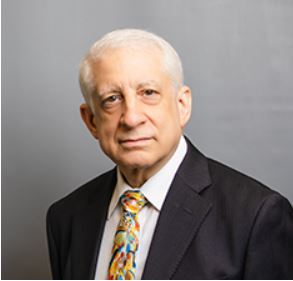
Professor Arthur S. Leonard.
The following is an op-ed in response to Professor Ross Sandler’s Commentary regarding mail-in ballots and the election. To read that piece, click here.
I think Ross Sandler makes some very good points in this editorial on mail-in ballots. I think, however, that we have an exceptional situation with this year’s election. Part of the problem in thinking about the mail-in ballot issue is that it takes a fair amount of time to undertake the steps necessary to conduct mail-in voting on a large scale, especially in a jurisdiction where it hasn’t been done in the past. We can’t know far enough in advance what the situation will be with the pandemic.
Right now, in New York, we are in a very different situation from most of the rest of the country because our collective efforts have brought the incidence of new cases down to a low level and, as New York Law School’s consultant said in our briefing, the chances of coming into contact with an asymptomatic person who is unmasked in a public place is now very low. If we could count on that situation persisting to November, I would agree that it makes sense to revert to our normal rules in New York with the limited number of reasons why somebody could request an absentee mail-in ballot.
But we don’t know that. We could be in the middle of a second wave, making it very dangerous to have in-person voting on a large scale, especially if it involves people waiting in long lines and being in crowded polling places where social distancing is difficult to maintain.
So my view is that, given the time in advance needed to conduct wide-scale mail-in voting, it is prudent to go ahead and plan for that, but only as a temporary thing.
I would be totally opposed to permanently altering the voting system in New York to virtually all mail-in as a handful of other states have been doing for years, since I agree with Sandler’s preference in a “normal” time to rely primarily on in-person voting.
I do think early voting opportunities make some sense, but that makes me uneasy because events occurring in the last few weeks before the election could be occurring after many people have voted, and some might want to change their vote!
By: Arthur S. Leonard, Robert F. Wagner Professor of Labor and Employment Law at New York Law School


Hmm. Kind of a no-brainer to avoid crowded and unsafe conditions at the polls when the US is the world leader in COVID righ now, no?
With due regard for Prf. Leonard’s statement that “I would be totally opposed to permanently altering the voting system in New York to virtually all mail-in as a handful of other states have been doing for years, since I agree with Sandler’s preference in a “normal” time to rely primarily on in-person voting.”
I view such statement as un Democratic and serving vested poslitcal machine interests in NYC, time for it to go. . I ask: Do you hold this opinion because in person voting in NYC has worked so well over the years that the current system must be retained? It is not just the COVID but a structural failure dsigned to disnfranchise literaly millions through inconvenience, incompetance and rushed decision making. Does one still have a land line in one’s apartment so that one must be chained to a wall to speak? No. Voting should not be determinant upon presenting at a place and time which has likely botched the paperwork, run by temp staffers and patronage hacks, and forces waitin and rushed decision making through timed decision making while standing in a booth, all of which then serves the party line. Free the voters. Free the vote. And kill nether with COVID now or when COVID-21 and -22 arrive in NYC.
My personal online voter experience involved requesting an absentee ballot from the New York City Board of Elections for the recent June 2020 primary, and that absentee ballot was never received. My continuing voter experience involved sending a follow-up email questioning why the previous requested absentee ballot was not received, and the New York City Board of Elections never responded.
Comments from Professor Sandler and Arthur S. Leonard appear to cover most aspects of concern regarding the risks of mail-in voting fraud and early-voting fraud. However, some needs relative to the voter mail-in ballot requires much consideration.
1. What type of verification can the mail-in voter expect that will indicate their mail-in ballot was received by the New York City Board of Elections?
2. What guarantees will the voter receive that their vote was registered as indicated on the mail-in ballot?
3. Will there be a vote database whereby a voter can confirm online (by use of a code number) indicating how a voter’s mail-in vote was tallied?
Traditional Election Day dates/times should be retained because any changes to the norm leads to potential fraud. Additionally, a very important issue not addressed by either Professor Sandler or Arthur S. Leonard is the urgent need for verifiable voter identification.
Through 244 years of American political evolution, the in-person verifiable identity form of voting has proven to be the most perfect expression of the democratic ideal. To alter or diminish this perfected form expressing vox populi only lessens the sacrifices of those who helped create the greatest self-governing system of, by and for the people. From: G. Fortunak, MCJ